Pantai Inn…what a great memory.
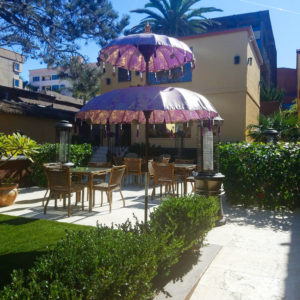
Pantai Inn…what a great memory.

You’re ready to fly out for your next adventure. You’re excited…
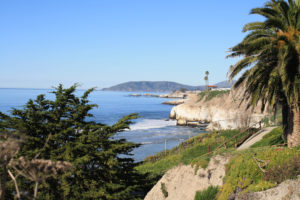
Everything is ready to go…luggage, passports, tickets, camera. You park your car at the airport and head to the terminal. At some point, it dawns on you that you think you remember exactly where you parked. It was Section D 21. Right?
Or, was it G 21?
I used to take a picture of the sign in that section. But, then I’d have to scroll through my vacation pictures to find it. Someone suggested writing the section on the parking ticket. But, what if you don’t take the ticket with you? Or, you left it in the car? Not very helpful.
Here’s a better tip I learned from an airport shuttle bus driver.
Put the section number in your phone’s calendar on the day you will be returning. All you have to do is look at your calendar…and there is the section where you parked.
The things I’ve learned…

Shadow says Happy Thanksgiving
Wondering what to give for a gift this year? Looking for something different than your usual ideas?
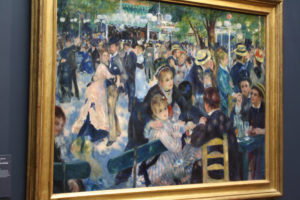
You’re looking for a special gift for a special friend or loved one. But, you just don’t know what to do.
How about giving travel? That’s right…Travel.
Here are a few ideas to get you started thinking.
1…Accommodations: Give a free night at a hotel or a gift card to Airbnb, bedandbreakfast,com, or any hotel chain. These are usually open to dates the person chooses.
2…Airfare: While airfare is probably non-refundable, give a gift card from an airline. Check to see if that airline flies into the person’s home airport before you spend the money.

3…Car Service: How about an Uber gift card?
4…Museums: Check out museums in the person’s home town or one they like to visit and buy them a membership. If that’s not in your budget, how about a day pass?
5…Food Tours: Many cities have food or specialized tours. A gift certificate might be just the thing.
6…City Pass: Many cities also have City Passes, where attractions are discounted. Check to see if the city nearby has one.
7…Classes: Cooking classes, wine tasting classes, cheese tasting classes are all fun things they might not do on their own. Pick one which will interest your friend.
8…Eating: Face it…who doesn’t like to get a gift certificate to a restaurant? Give them one to a favorite or surprise them with a new and different place.
9…Surprise: Is there a NASCAR driving school they’ve always wanted to go to? How about an in-depth cooking class at the CIA? Maybe it’s a private lesson from a ski instructor in Breckenridge. Whatever it is…this might be your opportunity to give a bucket-list gift.
Whatever you do…it will certainly be different than socks!
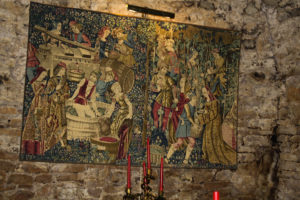
Until recently, if you made a hotel reservation, you guaranteed it with a credit card.
In almost all cases, if you canceled the reservation, even on the day you were supposed to check in, you weren’t charged.
Those days may be over.
I just read of a new policy from Marriott that levies a one-night penalty for cancellations made within 48 hours of expected check in.
The new policy applies to all of Marriott’s brands in the U.S., Canada, and Latin America.
Hilton has also implemented a similar policy.
Is it negotiable?
If you have frequent stay status with the major chains, the answer is a qualified yes, but under no circumstances should you ever cancel a reservation online.
That will almost always cost you a cancellation fee.
Best suggestion is to have a conversation with a manager, if possible. Don’t just call the 800 reservation line. Second choice would be to talk with a supervisor at the front desk of the hotel.
Does it mean you won’t get charged for paying for a room you won’t be using? Not necessarily. But the chances are better.
Are these policies here to stay? Not sure. We’ll have to check in a few months and see if they’ve changed again. Stay tuned…
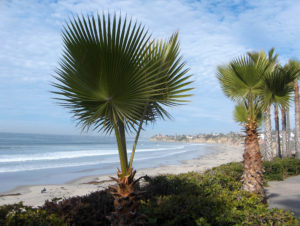
Summer is ending. Leaves are beginning to turn color or have already fallen…depending where you live. The pool is a little too cool. Days can still be warm here in northern California.
Maybe it’s time to think about a winter getaway.
If so…now is the time to book that airfare and decide on those accommodations.
Yes, now is a good time to get serious about booking your airfare. Especially if it is an international trip you’re planning. I’ve found that international airfare starts rising about 90 days out. Domestic fares are supposedly at their best 54 days out, unless you find a fantastic fare.
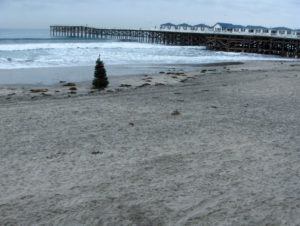
Also, where do you want to stay? Is it an all-inclusive, a vacation rental, hotel, or resort? Are you flexible or do you need a specific time and location? Look at Internet specials. Sometimes you can get lucky and find deals at the last minute as resorts like to have all their facilities booked, but don’t count on that.
If you’re traveling internationally, be sure to check your passport. Make sure it doesn’t expire in the next six months. If it’s close to expiring, apply for a renewal immediately. Right now, the passport offices tell me there could be a three month wait. After all, it will be January in two months!
Do you have a house sitter or pet sitter? If so, check their availability. You wouldn’t want to find out at the last minute they are already booked with someone else.
Do your plans include a special type of getaway where you need a guide? If you’re thinking of diving in the Caribbean, exploring Antarctica, checking out all the Christmas markets in Germany, or hiking in the Andes…regardless of the time of year, you’ll need some type of guide. Start looking now at who offers what packages and what appeals to you and your budget.
If you’re planning weekend getaways instead of a longer stay, start looking at where you want to go and what’s going on that weekend. Maybe there are festivals, wine harvest events, concerts, sporting events, or performances which would be fun to attend. Accommodations might already be booking or booked. Check the calendar for events in the area where you want to go.
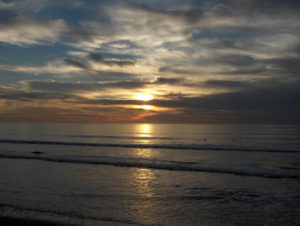
Regardless of when or where you are thinking of going…a little advance planning now will help you have a wonderful time on your winter getaway. Let me know where you went…

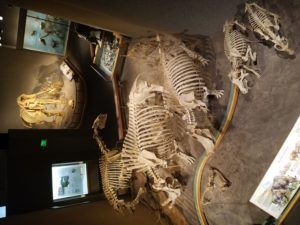
Dinosaur bones…mummies…and gigantic geodes… Oh My
Visiting Denver? Have kids with you?
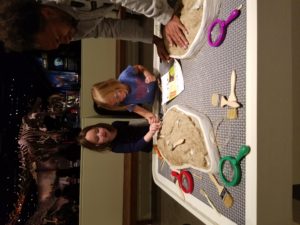
If so, you need to stop at the Denver Museum of Nature & Science. Exploring the wonders of Colorado, the earth, and the entire universe will keep you entertained and informed for the day. Don’t worry. Kids won’t be bored.
In fact, kids enjoy the Discovery Zone, where they can “excavate” fossils, manipulate and watch water in action, try their hands at building, and create art projects. With their Dinosaur Adventure Guide in hand, kids head to each of the six embossing stations to get their stamp. Truly interactive, this hands-on is complete with lab coats and safety glasses.
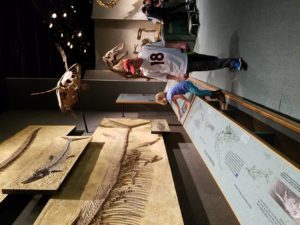
The Ultimate Dinosaurs exhibit showcases some of the most spectacular dinosaurs I’ve seen. With 17 full skeletons and dozens of fossils and casts, videos showing how they might have lived in prehistoric times, and numerous stations with interactive microscopes and touchable bones and specimens, you feel up close and personal to these critters.
When we were there, scientists were working in the lab uncovering some newly discovered fossils.
A little history: The story of the Denver Museum of Nature & Science begins in 1868, when Edwin Carter moved into a tiny cabin in Breckenridge, Colorado, to pursue his passion: the scientific study of the birds and mammals of the Rocky Mountains. Almost single handedly, Carter assembled one of the most complete collections of Colorado fauna then in existence.
Word of Carter spread, and in 1892, a group of prominent Denver citizens declared their interest in moving his collection to the capital city for all to see. Carter offered to sell the entire collection for $10,000. The founders also secured an impressive collection of butterflies and moths, and a stunning collection of crystallized gold.
Together, these three collections formed the nucleus of what would become the Colorado Museum of Natural History. After years of preparation and construction, the Colorado Museum of Natural History finally opened to the public on July 1, 1908. John Campion, the first president of the board, said in his dedication address, “A museum of natural history is never finished.”
A discovery in 1926 put the Museum on the map. A crew working near Folsom, New Mexico, unearthed stone projectile points alongside the bones of an extinct bison species. These “Folsom points” proved that humans lived in North America more than 10,000 years ago, hundreds of years earlier than previously believed. The Museum was propelled to the forefront of archaeological research, the beginning of contributions to science that continue today.
By the time the Museum turned 50 years old, more than 1 million people had visited, the building continued to expand, and it had a new name: the Denver Museum of Natural History. A year later, the first planetarium opened in a small room equipped with a star projector and fabric dome, which eventually morphed into what is today the digital Charles C. Gates Planetarium. The Museum celebrated its 75th anniversary with the opening of Colorado’s first IMAX theater when Phipps Auditorium, which for 40 years was home to popular programs for adults and children, was converted into the giant-screen venue. In 2010, 3D technology was added to the IMAX experience.
The north wing became home to Prehistoric Journey in 1995, introducing new techniques in exhibitry, such as “enviroramas” that use distinctive sound and lighting, and a viewing lab where the public watches dinosaur fossils being cleaned and studied.
In 2000, the Museum celebrated its centennial with a new name: the Denver Museum of Nature & Science.
The Museum received international attention in fall 2010 because of an amazing discovery high in the Rockies. A bulldozer operator working near Snowmass Village unearthed the remains of a Columbian mammoth. The Museum’s curators dug a little deeper and found an exceptionally well-preserved fossil site, packed with Ice Age animals. In just 69 days, a huge team of scientists and volunteers excavated thousands of fossils. Quickly christened The Snowmastodon Project, the discovery represented a new benchmark for understanding climate change in the American West.
If You Go: The museum is open 9 to 5 every day except Christmas. For more information and for ticket prices, their website is http://www.dmns.org/.
Address: 2001 Colorado Blvd, Denver, CO
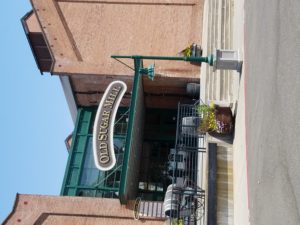
Mention wine tasting in northern California, and the obvious destinations come to mind. Napa, Sonoma, Lodi, Livermore Valley, Mendocino…just to name a few. Ask about Clarksburg and you might get some puzzling looks. Others realize the area as a great place to grow Chenin Blanc grapes. But, they don’t really know much else. And, they might not realize it’s also a great place to taste wines.
Locals knew the area before grapes were the main crop.

Sugar beets used to be harvested on the same area where rows and rows of grapes now sit. The Old Sugar Mill was constructed in 1934 by the Amalgamated Sugar Company, and was an operating sugar mill until 1993. At its peak, they processed 900,000 tons of sugar beets into 100,000,000 pounds of sugar.
That’s a whole lot of sweet.
Fast forward to today. The beautifully restored, red brick buildings sit surrounded by perfect rows of grapes…not fields of sugar beets. It took some work. Transformation from the Old Sugar Mill and its processing of sugar beets to what we see today began in 2000. With new owners and investment partners, the property has been transformed into a showplace wine facility.
It’s like the transition to wine tasting was a natural progression.

Currently, the Clarksburg vineyard appellation encompasses almost 60,000 acres in a 16-mile long, eight-mile wide area. This appellation is home to over a dozen wineries, 13 of which call the Old Sugar Mill home…Clarksburg Wine Company, Heringer Family Estates and Vineyard, Todd Taylor, Three Wine Company, Carvalho Family Winery, Elevation Ten, Rendez-Vous Winery, Due Vigne Di Famiglia, Draconis by Matt Powell, Perry Creek Winery, Bump City, Batia Vineyards, and Seka Hills Winery.
Wine varietals from all over northern California, some of which include Zinfandel, Cabernet Sauvignon, Barbera, Tempranillo, Chardonnay, Chenin Blanc, and Sangiovese. In fact, there are ovver 35 different varietals grown here. Wineries from other parts of California buy grapes from here to bottle wines under their own labels.
Tasting the wines…I can see why.

The climate for the Clarksburg AVA creates a moderately long growing season with plenty of airflow and light. Located on the Sacramento River, this maritime influence of the Delta offers cool evenings, warm days, limited summer fog, and a significantly less probability of spring frost. Less rainfall is a good thing as well. Not having rain during critical growing stages, like late spring, depletes the ground water faster.
Good? You bet. The vines become stressed sooner and the flavors increase. Try it for yourself.
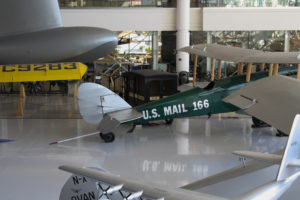
There are aviation museums and then there’s this one…
With displays ranging from the elegant aeronautic designs of Orville and Wilbur Wright, to an actual Lockheed SR-71 Blackbird that can fly at speeds of over 2,000 miles per hour, the Evergreen Aviation & Space Museum located in McMinnville, Oregon, has a little something for everyone.
With two impressive museum buildings and a theater, you should plan a full day of exploring here. Founded in the memory of Captain Michael King Smith, exhibits celebrate the lives of innovators, pilots, and veterans who courageously pioneered flight in some pretty remarkable machines.
The centerpiece of these aeronautic breakthroughs is the original Spruce Goose. Built entirely of wood due to wartime restrictions on metals, this massive airplane stands as a symbol of American industry during World War II.
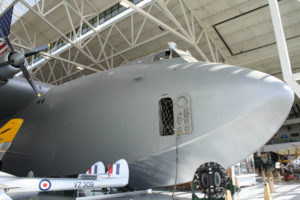
The largest wooden airplane ever constructed, and flown only one time, the Spruce Goose represents one of humanity’s greatest attempts to conquer the skies. It was born out of a need to move troops and material across the Atlantic Ocean, where in 1942, German submarines were sinking hundreds of Allied ships. Henry Kaiser, steel magnate and shipbuilder, conceived the idea of a massive flying transport and turned to Howard Hughes to design and build it. Hughes took on the task, made even more challenging by the government’s restrictions on materials critical to the war effort, such as steel and aluminum. Six times larger than any aircraft of its time, the Spruce Goose, also known as the Hughes Flying Boat, is made entirely of wood.
Originally designated HK-1 for the first aircraft built by Hughes-Kaiser, the giant was re-designated H-4 when Henry Kaiser withdrew from the project in 1944. Nevertheless, the press insisted on calling it the “Spruce Goose” despite the fact that the plane is made almost entirely of birch.
The winged giant made only one flight on November 2, 1947. The unannounced decision to fly was made by Hughes during a taxi test. With Hughes at the controls, David Grant as co-pilot, and several engineers, crewmen and journalists on board, the Spruce Goose flew just over one mile at an altitude of 70 feet for one minute. The short hop proved to skeptics that the gigantic machine could fly.
Perhaps always dreaming of a second flight, Hughes retained a full crew to maintain the mammoth plane in a climate-controlled hangar up until his death in 1976.
The Spruce Goose was kept out of the public eye for 33 years. After Hughes’ death in 1976, it was gifted by Hughes’ Summa Corporation to the Aero Club of Southern California. The Aero Club then leased it to the Wrather Corporation, and moved it into a domed hangar in Long Beach, California.
The Disney Company acquired the Wrather Corporation, thus taking over the lease of the Spruce Goose. Evergreen subsequently bought the aircraft from the Aero Club.
In 1992, Evergreen Aviation & Space Museum co-founders Michael King Smith and Delford M. Smith submitted the winning proposal to provide the aviation icon with a proper home. The Flying Boat was disassembled and transported by barge up the West Coast, then up the Columbia and Willamette Rivers, to Portland, Oregon. It remained there for several months, until water levels permitted the huge structures to safely pass under the Willamette’s many bridges.
Finally, in February 1993, the aircraft was transported by truck for the last 7.5 miles to McMinnville, Oregon. Temporary hangars were built as housing for the aircraft, while volunteers worked on the aircraft’s restoration. In 2001, re-assembly of the Hughes Flying Boat was completed in its new home.
This massive plane fills you with awe and wonder. But, that’s not all that’s here…
B-17 Flying Fortress
Best known for its surprisingly successful daylight raids on Germany during World War II, the B-17 bomber, also known as theFlying Fortress, withstood a storm of anti-aircraft fire to help ensure victory.
World War II Aircraft Area
Immerse yourself in history with rich stories and beautiful artifacts from World War II on display throughout the Aviation Museum WWII Aircraft Area.
Titan II Missile
Explore this large booster rocket from inside its missile silo, and then experience the excitement of a simulated launch sequence from the launch room.
SR-71 Blackbird
One of the world’s fastest aircraft, this high-altitude reconnaissance plane flew at the very limits of the earth’s atmosphere at speeds well over 2,000 miles per hour.
Check out the space travel exhibits…
The Evergreen Space Museum transports you back to a time when travel to the stars was just a dream, and then winds you through history from miniature rockets launched from remote farms to the robotic spacecraft we know today. See the artifacts and spacecraft up close – from rocket booster systems to manned and unmanned spacecrafts.
Early & Earth Bound Rockets
The first milestone of space travel took place, not on the coast of Florida, but on a New England farm field, where on March 16, 1926, a flimsy, liquid fuel-driven structure lifted off and flew 41 feet into the sky – so began man’s journey to the stars. Learn more about the earliest achievements in space exploration with our historic exhibit.
Boosters
Whether the payload is a atom bomb or an astronaut, the first step into space is the rocket booster which propels the vehicle into space. These increasingly huge engines unleashed the massive thrust necessary to break away from earth’s gravity and start the exploration of space.
Manned Spacecraft
In 1961, the first man left the earth’s atmosphere to explore space. Since that time, man has navigated planets, orbited the earth, and walked on the moon. Follow humanity’s footsteps into space with our elaborate exhibit that explores the history manned space flight.
Unmanned Spacecraft
Robotic spacecraft has carved the way for extensive space exploration in ways that manned spacecrafts cannot. From visits to the sun to exploration of planets, unmanned spacecraft have provided valuable data to further our knowledge of the universe. Follow this remarkable trajectory from the earliest unmanned craft to plans for the future with our various displays and exhibits.
Like I said…plan on a whole day here.
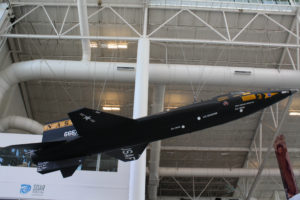
If You Go: Located at 500 NE Captain Michael King Smith Way in McMinnville, OR. Hours are 9 to 5 daily. Website is http://www.evergreenmuseum.org/